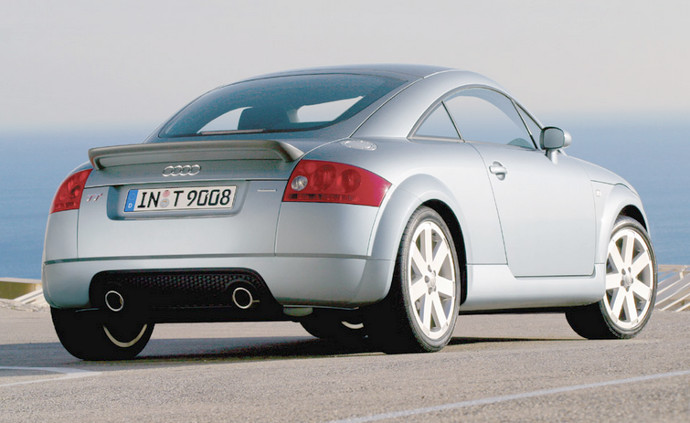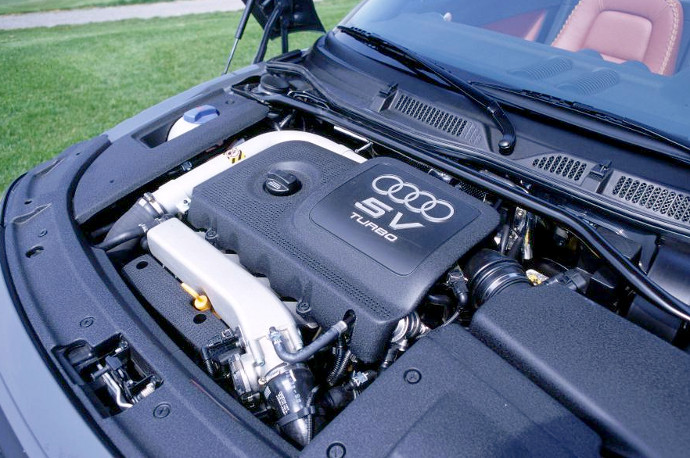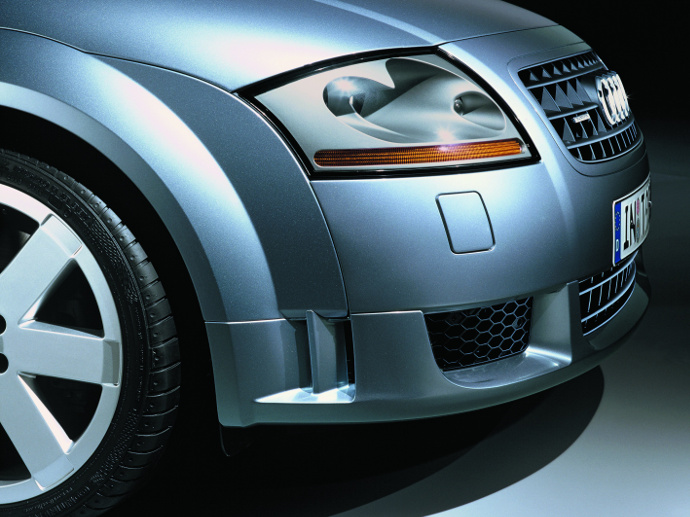As instantly recognisable car profiles go, there’s the Beetle and the Porsche 911. But another altogether more modern classic silhouette comes to mind – the soon to be iconic original Audi TT. So if you like the idea of a car with broadly Golf Mk4 running gear wrapped in a chic sportscar exterior and a truly innovative interior, look no further than the inspirational and now dead cheap early TT…
The first generation Audi TT still turns heads with its unmistakable shape and lightening quick performance, and because they’re now buttons to buy it’s a model that’s become an unmissible splodge on the radar of many a shrewd VAG enthusiast. With four-wheel drive, aircon, leather and 16in alloys as standard – even the base specification is unlikely to disappoint, and legendary German build has ensured that the earliest ones still look tidy.

The model appeared here in February 1999, and was available with high or lower power output 1.8 turbocharged engines – namely 225 and 180bhp respectively, the former being recognisable by its 17in wheels. You’ll probably remember seeing some early left-hook imports at this time – but these were only front-wheel drive, so are best left alone. The roadster convertible arrived that August and in 2003 a lower output 150bhp engine was launched, but, again, this was front-wheel drive only. A 3.2 V6 was introduced in September 2003, and the model was revamped completely in 2006.

If you remember, there was a high-profile question mark over high-speed stability and a raft of measures – including rear spoiler and stiffened rear springs – were implemented as a result of a recall in April 2000. So it’s classy, rapid and now affordable – but here’s the rub. Neglect and general ignorance over maintenance can trip up the unsuspecting VAG Group bargain hunter – so here’s a guide to help you avoid buying a money pit…
Engines
That VW-derived turbocharged 1.8 is strong, but a condition of longevity is that the cambelt, tensioner roller and tensioner damper are replaced at the correct interval. It needs doing every 60k miles so make sure it’s been done or haggle the price down by £400 to cover it. If you end up doing it post-purchase insist that a new water pump goes on at the same time; the plastic impeller has a tendency to come loose on the shaft which can cause overheating.
Next, check through receipts and quiz the owner to find out how often the oil and filter’s been changed as neglect here can often lead to oil starvation and engine failure. The problem is, the fine L-shaped strainer at the bottom of the sump is prone to blockage, starving the pump of oil and running the risk of quickly ruining the engine. Our advice with a car that’s got a sketchy history is to strip the sump, and replace the £10 strainer. It’s a pretty straightforward job, and most specialists will charge around £150 to carry out the work. Of course another consequence of infrequent oil changes is damage to the turbo; general gunge and carbon desposits can cause the variable vanes to stick open causing overboost and the car to suddenly go into ‘limp home’ mode.

Like other VAG cars from this era, the TT can suffer problems with coil packs and air flow meters, so any evidence of misfires, rough running or poor performance could be a result of these. Quality replacements are relatively cheap now though, so it’s no biggy. Another culprit could be the coolant temperature sensor which will result in problems starting, the car running very rich, or the engine management warning light coming on. It’s only about £20, and takes 30 minutes to fit and top up the fluid.
Incidentally, that 1.8T responds very well to an ECU remap if you hunger for a few more horses.
Running gear
Starting with the suspension, the main area of concern is the anti-roll bar. The original had plastic collars which can fracture when water is allowed to get inside, causing the bar to move in the mount. The replacement modified ones have solid metal sleeves. The rear swivel joints on early models have also been known to seize up, and the arms actually snap. Again, a modified rubber bush type replacement is available, and most cars will have had these fitted as part of a recall.

Another thing to watch out for are faulty hazard warning light switches. It’s a horrible job to replace them as the relay is in the switch itself and you have to remove the radio to get to it. More annoying – and potentially more expensive – are faults with the dash pod. Various symptoms include irregular fuel and temperature readings, and secondhand replacements are in short supply due in no small part to the fact that Mk2 Golf owners fit them in their cars. Beware also that you’ll need to get a main dealer to recode it – and this can be as much as £100.
Like other quattro models in the VW/Audi line up, the TT employs a Haldex unit (just in front of the rear diff) to control the power ratio between the front and rear wheels. During normal driving, 95% of the work is done by the front wheels, while in wet or slippery conditions this may shift to 60:40. Key to its function is regular oil changes; the schedule is 20k for a change of oil, 40k for change of oil and filter. If it fails and the ESP warning light comes on, bargain on spending £175 secondhand for a new control unit.
TT stoppers are generally very good, so there’s no problems to report here. They are pretty heavy on front brakes, though, so check for disc and pad wear. Getting less use, the rear discs can rust – so check these while you are at it.

Convertible roofs leak with alacrity, but the area to watch out for in particular is down by the hinges. There’s a small rectangular plastic drip tray which fills with water, and if allowed to get clogged and overflow water will soak the convenience unit (which controls the windows/alarm/roof). Also, don’t make the mistake of leaving anything on the parcel shelf when folding the roof down – there’s a risk of smashing the rear glass window!
What to pay?
As Mk4 Golf prices slowly firm up, the early TT begins to look more and more of a bargain. Unbelievably, the cheapest ones on a T, V, W, X or Y plate are now changing hands for as little as £1,500. That’s ridiculous considering its list price new was a stonking £26,875. The 225bhp models don’t fetch much more than the 180s but might sell a little quicker. Bear in mind, at the bottom end of the market you can expect to play catch up on missed maintenance on such things as suspension and brakes. In other words, you could be buying a money pit if you are not careful. Incidentally, the starting price for the 3.2 V6 is £3,500 but being a more complex vehicle, we’d recommend paying closer to £5,000 to get a good, fully historied example.

Otherwise, buy this soon to be classic with confidence. For the ultimate period Audi effect, just make sure it’s in silver.
Ian
The opinions expressed here are the personal opinions of the author and do not necessarily represent the views and opinions of VW Heritage

